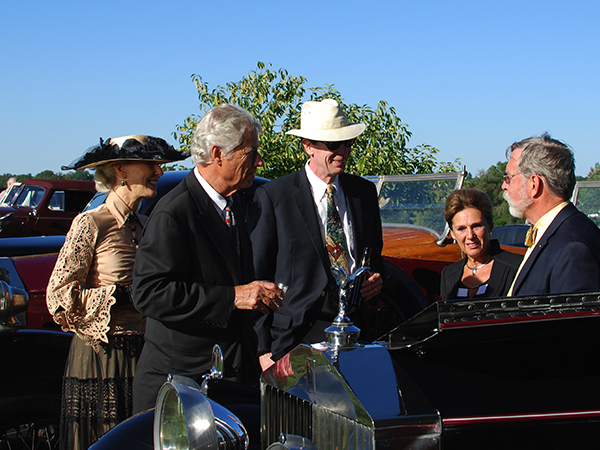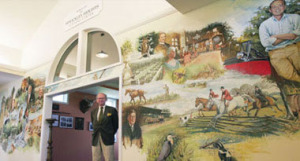We are committed to preserving the natural beauty
of Sewickley Heights and maintaining its historical integrity.
The area grew during the industrial revolution when Pittsburgh’s steel industry was in its infancy. At that time, most industrialists and business leaders lived in a community called Old Allegheny, which was a separate city across the river from Pittsburgh. The homes there were comfortable and handsome, but the proximity to the city’s pollution prompted residents to choose Sewickley for their summer residences.
The 1900’s through the 1920’s was a fascinating time. Many exquisite mansions were built then and although they were referred to as “cottages”, similar to those found in Watch Hill, Newport and Southampton, they were actually elaborately named working farms accompanied by a myriad of servants. Stonewalls, gatehouses, formal gardens, tennis courts and swimming pools were among their many features.
The relocation of Allegheny Country Club (founded in 1895) from Old Allegheny to Sewickley Heights, further boosted the area’s popularity. During this time, wonderful traditions such as the Horse Show and the Riding and Driving Party were established.
One can only imagine the wild social affairs of the time. Sewickley Heights has always been a special place to live: “magnificent enough to inspire you, yet peaceful enough to relax you.” We celebrate our history, so please enjoy our Center.
The Sewickley Heights History Center Mural
created by Richard Smith
An expansive mural featuring key founders and vignettes of their lives was created by Richard Smith, past Sewickley Herald Man of the Year. Spanning two walls, each 10 feet wide by 9 feet high, it took him three years to complete. Smith also has created murals for Sewickley Academy, Allegheny Country Club, and the Watson Institute.
The History Center’s mural, located above the arched entrance to the Wilpen Farm Theater, contains various icons of Sewickley Heights. In the right hand corner is the late G. Whitney Snyder Sr. who established the center.
The history center is built on land original to the Snyder family farm and looks across to Wilpen Hall, the estate built in 1899 for William Penn Snyder. In the mural, Mr. Snyder is pictured with his first car, an American Austin, that is now kept at the center. Some of Mr. Snyder’s other cars are kept at the Frick Museum in Point Breeze.
Among the industrial leaders who summered in Sewickley Heights are John and Adelaide Burgwin who founded the Sewickley Hunt Club in 1921. Henry Oliver and his daughter Edith Oliver Rea are shown alongside his famous Farmhill garden. The Healey Carriage which is shown in the mural at an Allegheny Country Club horse show is kept at the center.
A view of the club’s sporting life is also represented: The 1906 U.S. Amateur Golf Championship whose title was won by Eban Byers, the 1914 Davis Cup tennis championship, and the equestrian life as depicted with the side-saddle rider.
One can also see the Gate House of J.F. Byer’s estate, Goodwood. Goodwood later became the H.J. Heinz home and was torn down in 1989. B.F. Jones’ father is featured near an interior view of the Fairacres II living room. One can also see a representative water tower which was in use on many of the Sewickley Heights estates. Smith also painted the Palladian poolhouse at the Hillside Farm owned by Lewis Park. He included a sphinx which today still sits on a gate column of Fairacres estate and can be seen from Blackburn Road. A ladle, pouring out liquid steel, symbolizes its importance in Pittsburgh’s and Sewickley Heights Borough’s history and development. Interspersed among the historic figures are paintings of many plants and animals native to the area.








